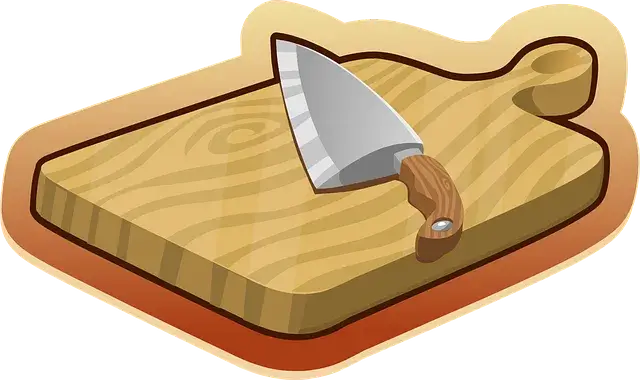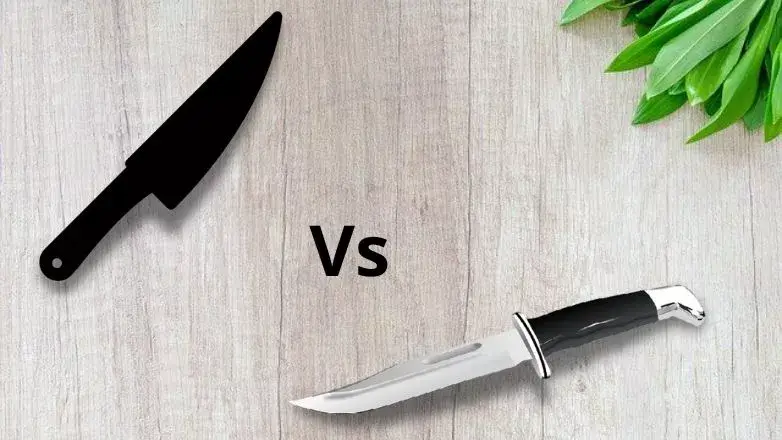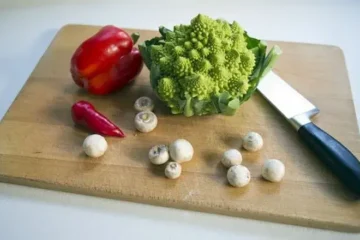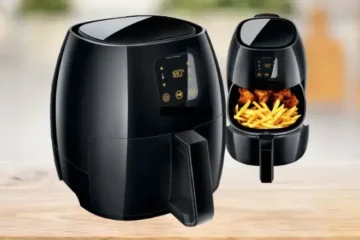When choosing new kitchen knives, you will most probably come across two different types at your local store either a stainless steel knife or a ceramic knife. Both of these knives have their pros and cons, if you’re a little confused don’t worry because in this article I hope to shed some light on the key differences between Ceramic vs Stainless Steel knives.
By the time you have read this article, I’m confident that you’ll have a better understanding of the benefits of ceramic knives when compared to steel as well as the potential problems you may face when using ceramic knives. Let’s take a closer look at Ceramic vs Stainless Steel.
Table of Contents
How are Ceramic Knives made?
Before I get ahead of myself I think it’s a good idea to quickly talk about how ceramic knives are made seeing that the manufacturing process is completely different from stainless steel knives. When you hear the word ceramic your mind probably has visions of a potter caked in clay creating a masterpiece on his potter wheel. However, there is no relation to the ceramic used by potters and that which is used to craft ceramic blades.
The material used to make ceramic blades is a mineral called Zircon which is only found in Australia (as far as I am aware) and it is pretty rare stuff, there is not a lot of it readily available so I’ve been told.
This rare mineral is mixed in a large mill along with water until it forms a slurry of small micrometer particles. This slurry is then treated so that it dehydrates and what is left is then added to knife molds which are then subjected to extremely high pressure and finally fired in a kiln. The final product is then a ceramic knife with a blade so hard that it can only be sharpened using a diamond-edged grinding wheel.
So now that you have a better understanding of how ceramic knives are made let’s move on to some of the problems that you may encounter when using a ceramic knife.
Potential Problems with Ceramic Blades
One of the big problems with ceramic kitchen knives is that they are brittle and the extremely fine edge can chip, no they won’t snap in half if you are slicing a tomato. But if they are dropped or if you attempt to cut frozen foods or cut bone with one, a ceramic knife chip or worse case completely break in two.
Once the blade chips on a ceramic knife it’s not a quick fix and not something you can do at home with a whetstone or a hone, your knife will have to be sent away to be professionally sharpened, and even then its touch-and-go whether life can be brought back to your knife.
Even storing your ceramic knife in the same kitchen drawer as steel knives can cause potential problems, increasing the risk of blade chips and damage. Unnecessary bending, twisting, scraping, and subjecting a ceramic knife to extreme temperatures can also potentially cause damage.
Ideally, they need to be stored separately or better still inside a kitchen knife roll or bag. That being said, manufacturers are always finding ways to improve their ceramic blades to more versatile and durable.
I think that because of the limitations associated with a ceramic knife they should just be an addition to your knife collection and not your sole go-to cutting knife.
Benefits of Ceramic vs Stainless Steel Knives
Now that you have a better understanding of the limitation and potential problems when using a ceramic knife let’s take a look at some of the positives.
First off the bat ceramic knives are sharp, I mean SHARP. I doubt you’ll find a stainless steel knife that holds a sharp edge as well as a ceramic knife does? I challenge you to find one, let me know how you get on. Even though it seemed strange, I saw a video of a man shaving his head with a ceramic knife; this only goes to demonstrate how sharp these blades are.
Apart from their sharpness ceramic knives are light, I won’t go as far as to say they are lighter than air, but damn they are close. For anyone that does a lot of laborious food preparation, you’ll find that by using a lighter ceramic knife you won’t run into any hand fatigue, this makes them a perfect knife for junior chefs in busy hotel kitchens.

Ceramic kitchen knives won’t rust or corrode like steel knives, no metal means no rust! Also, one key benefit of a ceramic knife is that its blades are dense and contain virtually no pores. This trait stops dirt and grime from absorbing into the ceramic blade. Unlike a stainless steel blade that requires a good scrub and washes. The ceramic blade is clean with just a simple rinse under warm water.
Another added benefit of the non-porous blade of a ceramic knife is that food odors from one food to another won’t transfer. For example, if you are cutting some chilies all that is needed is a quick rinse under the kitchen faucet and then you can move on cutting something else, the spiciness or flavor from the chili won’t transfer to the next food item you start to cut.
Have you noticed that fruits and vegetables can quickly discolor when you use a steel knife to cut them? Keep on reading.
Avoiding Fruit Discoloration
We have all seen it, you spend time cutting your fruits or vegetables into uniform slices only to find that they quickly start to turn brown, not as nice a look, right? This happens because the acidic vegetables and fruits react to the ions present in steel blades. Well, the good news is that by using a ceramic knife you can eliminate this problem. Since ceramic knives are ‘well ceramic’ they are chemically inert, and won’t react with your food in any way.
I can tell, you don’t sound convinced?
Try doing a comparison test by slicing apples with both a steel knife and a ceramic knife. It won’t take you long to notice that the apple cut with the steel kitchen knife will start to discolor and turn brown in a matter of seconds. Whereas the apple cut with a ceramic knife will still look fresh the following day.
The Versatility of Stainless Steel Knives
Stainless steel knives have been the cornerstone of every kitchen around the globe for centuries, and they aren’t going away anytime soon, there will always be a place for a steel knife in your kitchen. They are tried and tested and cannot be replaced with ceramic knives completely. Take for example cutting through chicken bones or trying to separate some mutton patties you simply cannot do this with a ceramic knife.
For some of you reading this, the extra care needed for ceramic knives may deter you from buying one. However, for the avid home cook having an assortment of ceramic kitchen knives is the perfect addition for your cutlery collection.
Read Also: Working of Dishwasher | Effortless Cleaning Wonders




